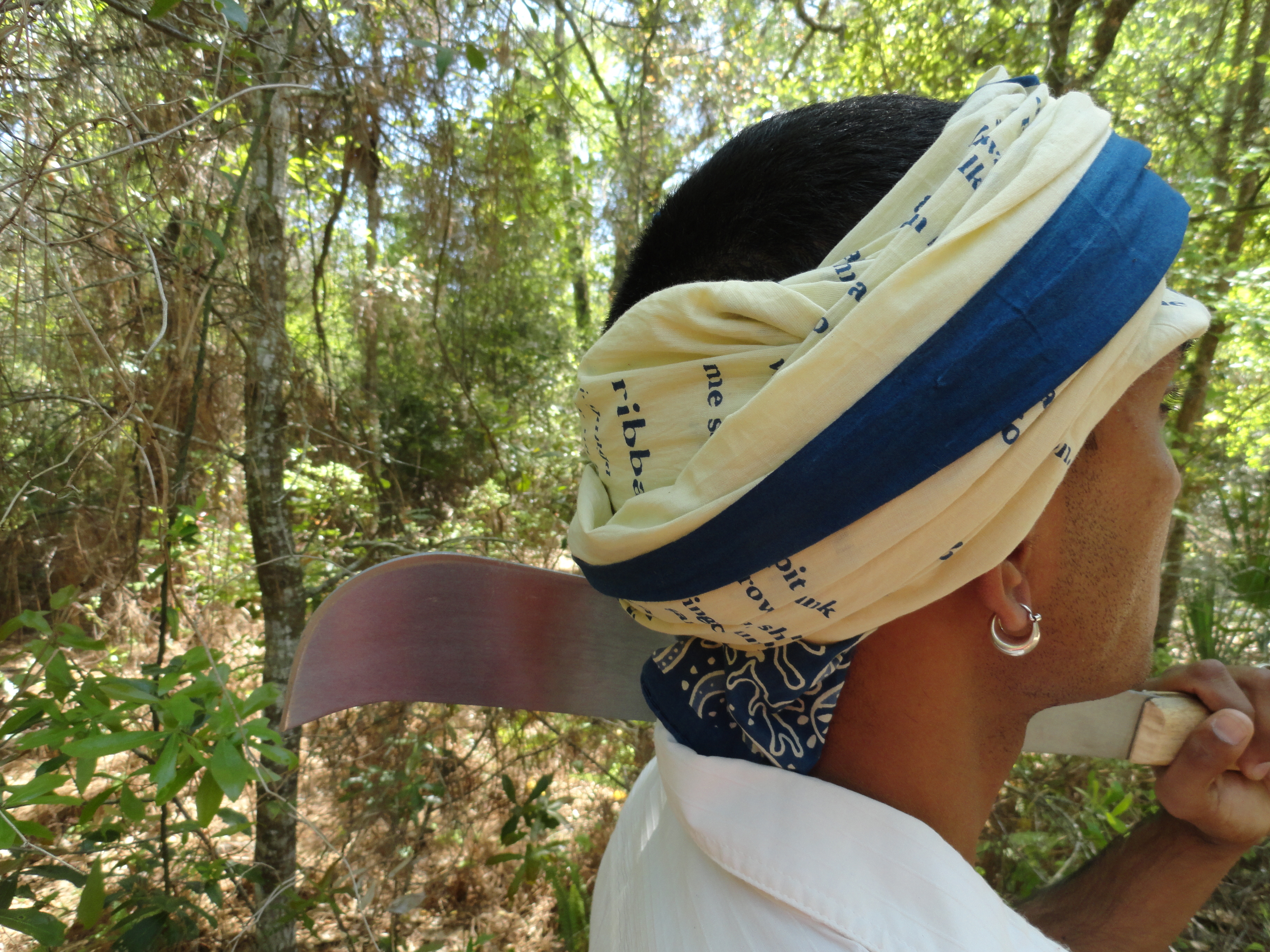
As a relatively invisible community in the United States, you face many issues of representation. You’ve read that insulting article about how a white journalist “discovered” us off of the A train. How are you written about? How do you write about yourself and your community? Do you use formal poems to express your musicality of language — the sonnet or villanelle? Do you use postmodern methods of fragmentation and collage from a brown perspective? What sources do you draw from? What is important to you as a writer?
For me, I understand the process of writing like I do my identity and history. It’s many strings wound together. It’s Hindi and Guyanese Creole, my Aji’s Bhojpuri, some Ramayana, some Hadith. It’s some ship records and some calypso.
What I often struggle with is the archive of material that includes my history — what am I drawing from? On both sides of my family reading and writing is new technology. In fact, I come from a mostly oral tradition rooted in the rice fields. The archive is going to be aural: my Aji’s ordhni, my Nana’s Ramcharitamansa, shards of my Aja’s biraha songs, my Nani’s book of disintegrating saris. Each one has a multiverse of stories in it. Just because the archive that I draw from does not look like an archive from the standard Western perspective does not make it any lesser. In fact, it’s more enlivened by imagination and the sensorial.
When I touch the pallu of my Nani’s sari or hold her bangle in my hand I can hear the harmonium at the Jag (yajna), the feeling of flower petals and rice in my palms. I can smell the agarbati and the curry. I hear the music of the bangle as she claps roti; see my mother eating from her mother’s hands.
Archives available
Some have already painstakingly labored to creating an archive for us, archives that are vast and impressive.
There is, of course, the old archive of ship records, passes, and notes that the British kept while they transported our ancestors and punished us for our misdeeds. These are housed in our various diasporic national vaults as well as in Britain, and are not that easy to access from the United States, Canada, Aoteroa, Paris, and the Netherlands. But some of them are finding their ways onto the internet, which is a real gift.
Of course, there are also white academics who wanted to study our Coolie cultures to “preserve” them for posterity. From Alan Lomax to Helen Meyer to Peter Manuel, the archives have taken root. These people have contributed academic legitimacy to our arts but it’s a shame that it still takes the voices of white people to achieve this. Something interesting to them that they were allowed to study while our immigrant families suffered the pressures of immigration and cultural assimilation.
Artists like Andil Gosine, filmmakers like Ian Harnarine, and journalists like Elizabeth Jaikaran and writers like Gaiutra Bahadur are also building archives through their various art forms that can inspire through cross-genre experimentation. Remember that genre is a fiction of capitalism.
Make your own Indian indenture diaspora archive
Creating an archive is about gathering the sources that haunt you with their songs and stories. As such, the distinctions of genre are very blurry. What is a story in verse? Is that when Aji sings about how the king killed a blind man? Our poetics are found in all kinds of combinations and creolizations. Visual art, novels, poems, songs, stories all work together to weave a Coolitdue Poetics. When assembling your archive think about the things that are charged with psychic power. These things can be events, memories, objects, songs — anything.
For me, when I think of my particular Coolie archive I use the following:
- Ship records or shards of them that have been made available online by writers and scholars like Gaiutra Bahadur. She even found some ship records that document queer men and one that documents a hijra’s experience.
- Lalbihari Sharma’s book of chautal songs, Holi Songs of Demerara
- The Still Cry, a collection of poetized accounts of indentured labor collected by Kumar Mahabir
- Recordings that I made of my Aji when she was still alive. She sat with me for hours and recounted her youth, what Guyana was like, how her family came to be in Guyana. She sang old old songs in Bhojpuri and expounded on her understanding of the Divine.
- Folk songs in general: the biraha, sohar, khelwan, saadi, bidesiya, bhajan, chautal, and baithak. I buy as many CDs as I can find whenever I go to Richmond Hill, especially of the oldest kinds of recordings or the folkiest.
- Old stories by my elders that I remember them telling me or that I’ve recorded in some capacity to remind me of them.
- Chutney music like Sundar Popo, Dropati, Rikki Jai, Anand Yankarran, Adesh Samaroo, Radew Chaitoe, and the list goes on and on.
- They Came In Ships: An Anthology of Indo-Guyanese Prose and Poetry
- Old tools: cutlass, lordha and sil, chimta, phookni, tawa, belna
- Old jewelry: jhumka, kangan, payal, gallehar
- Films: Coolies: How the British Reinvented Slavery, The Last Kantraki, Dhal Puri Diaspora
- A dictionary of Bhojpuri words and phrases in Guyanese Bhojpuri, Côté Çi Côté Là, the Hobson-Jobson dictionary, dissertations on Guyanese and Trinidadian Bhojpuri, books about language and indenture in South Africa and Fiji, all the articles I can find on “overseas Hindi”
I use this archive of diverse material to tell stories, to echo poetics, to allow myself to be haunted by fragmentation and wholeness. From assembling such an archive the poet is able to create new works that are rooted in an enduring practice of aural poetry — which is sometimes words on a page, sometimes song, sometimes an epic accounting, sometimes a buss belly laugh.

Coolitude: Poetics of the Indian Labor Diaspora